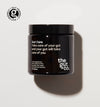Are Fibre Bars Healthy?
Date:
02 Dec 2022

Fibre cannot be digested by the body, as it is a non-digestible form of carbohydrate.
The body breaks down most carbohydrates into glucose, yet fibre cannot be broken down into sugar molecules, meaning it passes through the gastrointestinal tract intact. To keep hunger and blood sugar in check, consuming fibre is a great way to regulate the way your body uses sugars.1
The government recommends a daily fibre intake of 30g per day. Eating enough fibre is associated with a lowered risk of heart disease, type 2 diabetes, certain types of cancer and stroke.2
What are fibre bars made of?
Fibre comes in two forms:3
Soluble fibre is a type of fibre that dissolves in water, forming a gel-like substance. This form of fibre has been associated with lowering blood cholesterol and glucose levels. This type of fibre can be found in oats, peas, beans, citrus fruits, vegetables, and apples, amongst others.
Insoluble fibre is the kind that is most beneficial for your digestive system. It increases the bulk of your poo and helps you move what you consume through the digestive system, helping prevent constipation. Whole-wheat flour, wheat bran, nuts, beans, potatoes and vegetables contain insoluble fibre.
Are fibre bars healthy?
Fibre bars can be a great source of fibre; they are a quick and easy way to ensure you reach your daily fibre requirements and keep your digestive system happy whilst lowering your risk of disease.
Fibre helps to solidify your poo and ensures it absorbs water, so as well as helping you avoid constipation, fibre can be useful in preventing diarrhoea. Fibre can reduce your risk of developing haemorrhoids or diverticular disease, as well as colorectal cancer and bowel cancer.3
Foods with fibre are often far more filling than low-fibre foods, helping to keep you satisfied for longer. High-fibre foods help you to stay full for longer as it takes your body longer to process and digest, making you less likely to overeat.
Fibrous foods often have fewer calories compared to the same volumes of food that do not contain fibre, meaning you can stay full for fewer calories.3
What are the downsides of fibre bars?
For some people, eating a lot of fibre at once in the form of a fibre bar can bring side effects, including bloating, diarrhoea or constipation. This is likely only to occur the first time consuming a fibre bar, as your body will adjust to this new way of eating fibre.4
Fibre bars, although high in fibre, can sometimes be extremely processed, containing excess sugar, preservatives and flavourings.
Processed foods have been heavily linked to excess weight gain, obesity and disease, and consuming the wrong fibre bars can mean you are gaining a lot of negatives along with the positives of the fibre.5
Fibre bars can be high in added sugars, giving them the moreish sweetness that keeps you going back to them. Eating high volumes of added sugars has been linked to obesity, heart disease, fatty liver disease and type 2 diabetes.6
This would mean although you are lessening your risk factor of these health issues by increasing fibre intake, you are adding more risk by consuming excess sugar.
What is the healthiest fibre bar?
KIND Dark Chocolate Nuts & Sea Salt fibre bars are particularly high in fibre at 7 grams per bar. This gives you over 23% of your daily recommended intake. KIND bars have 6 grams of protein, 180 calories and only 4 grams of added sugar, making them a relatively low-sugar fibre bar.7
CORE Peanut Butter Chocolate Keto Bar are a great choice, particularly for the 0 added sugars and 7 grams of fibre. They contain 170 calories per bar and are plant-based, making them suitable for vegans.8
NuGo Fiber d’Lish Bar comes in at a whopping 12 grams of fibre per bar; that's 30% of your daily recommended intake. They come in at only 150 calories, making them the lowest calorie choice here, with the most fibre. They use all-natural ingredients, are vegan and include no additives.9
Conclusion
Studies have shown that adults are not eating enough fibre per day. On average, we consume only 20 grams per day, 10 grams less than is recommended.10 Fibre bars are a fantastic way to boost your fibre intake; just be careful to choose ones full of nutrients rather than additives and added sugar.
References
2: https://www.nhs.uk/live-well/eat-well/digestive-health/how-to-get-more-fibre-into-your-diet/#:~:text=Most%20of%20us%20need%20to,of%20a%20healthy%20balanced%20diet
3: https://www.mayoclinic.org/healthy-lifestyle/nutrition-and-healthy-eating/in-depth/fiber/art-20043983#:~:text=Dietary%20fiber%20increases%20the%20weight,Helps%20maintain%20bowel%20health
4: https://pubmed.ncbi.nlm.nih.gov/21736814/
5: https://pubmed.ncbi.nlm.nih.gov/33167080/
6: https://pubmed.ncbi.nlm.nih.gov/28420204/
7: https://www.kindsnacks.com/nut-bars/dark-chocolate-nuts-sea-salt-M17751.html?clickid=WGURiEy3ExyNU%3Ae3n50BGQccUkA07MSZGV8bTI0&irgwc=1&utm_source=impact&utm_medium=Skimbit%20Ltd.&utm_campaign=Online%20Tracking%20Link
8: https://www.corefoods.com/collections/keto/products/peanut-butter-chocolate-40g-10-ct-keto
9: https://www.nugofiber.com/
10: https://www.nhs.uk/live-well/eat-well/digestive-health/how-to-get-more-fibre-into-your-diet/
















